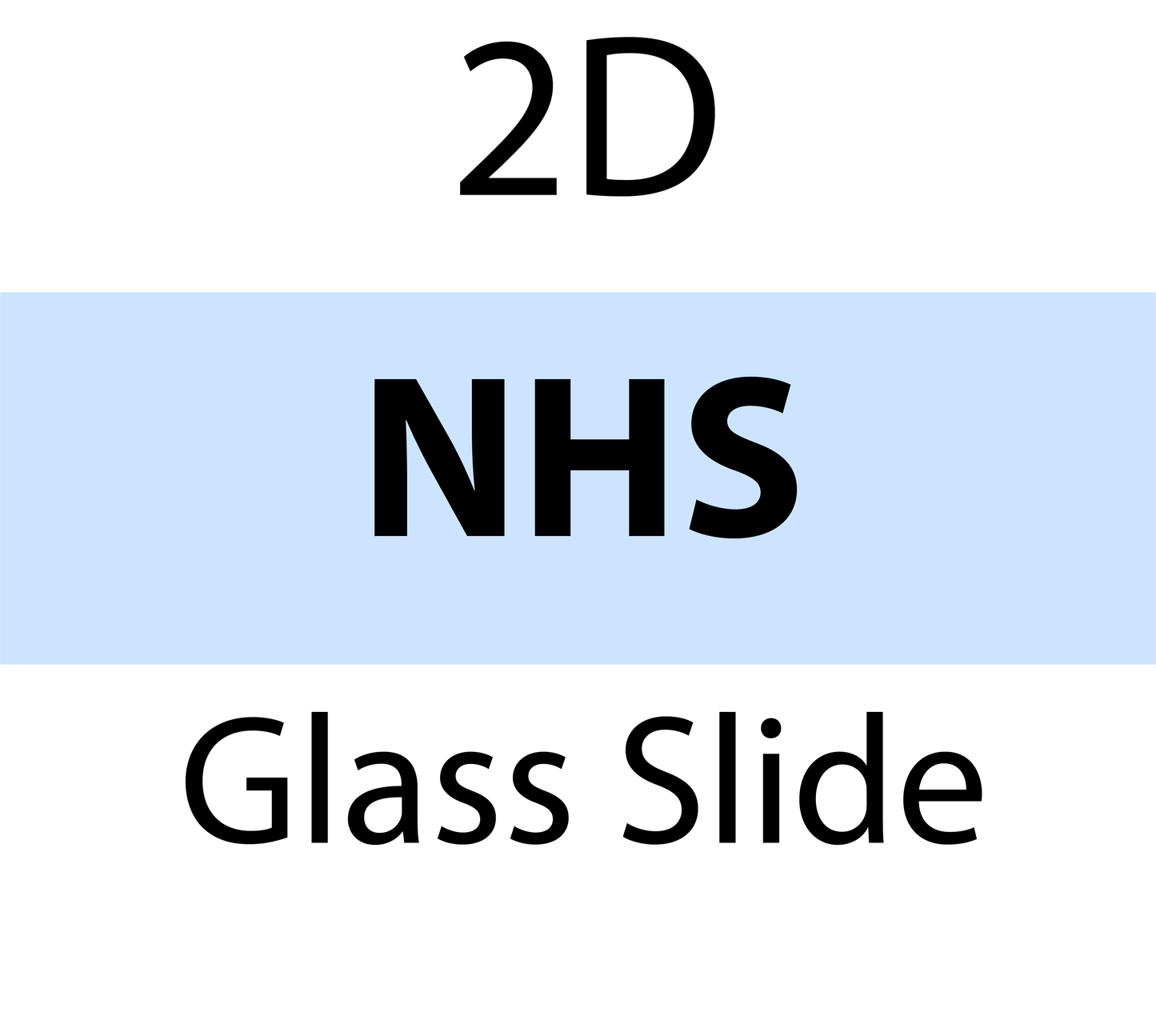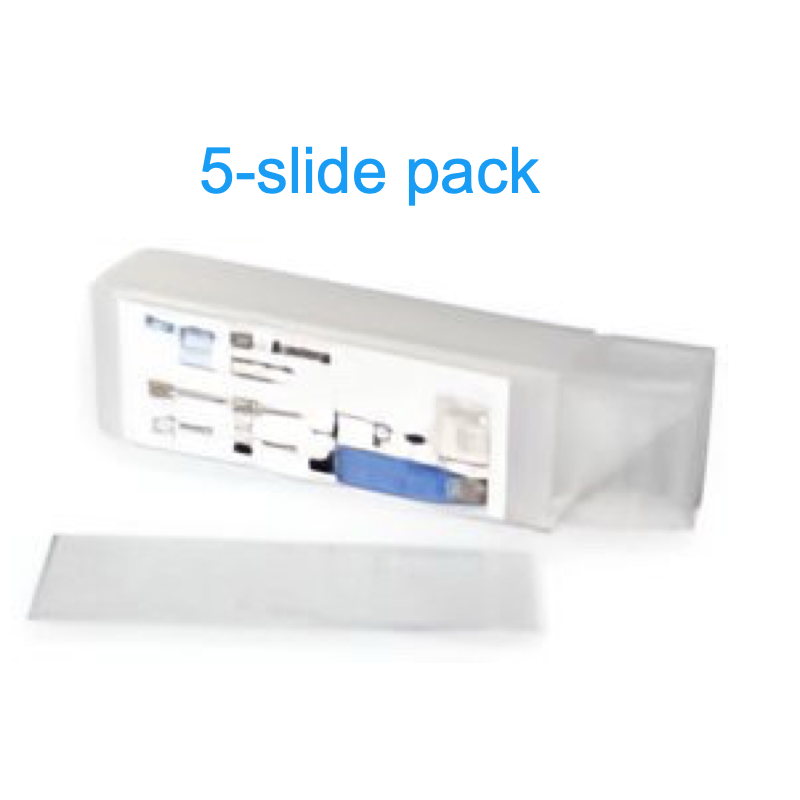PolyAn
104-00-425 PolyAn 2D-NHS Glass Slide (5 slides/box)
104-00-425 PolyAn 2D-NHS Glass Slide (5 slides/box)
Couldn't load pickup availability
2D-NHS Glass Slide, 5 slides/box
The 2D-NHS glass slides are manufactured from quality glass with high flatness surface smoothness. The glass has very low background fluorescence.
These slides are compatible with all microarray printers and slide scanners / imagers. We recommend the axiREADER for both colorimetric and fluorometric applications.
Surface Modification
The 2D-NHS glass slide are coated with a very thin NHS-ester layer that will covalently bind most biomolecules, including oligonucleotides, proteins, peptides and small molecules.
The NHS-ester reacts immediately with the NH2-terminus of biochemical species to form a covalent bond with the surface. The reaction of carboxyl groups with N-Hydroxy succinimide leads to highly reactive esters, which can be easily reacted with nucleophiles e.g. Amines, Hydrazines. However, due to its high reactivity the NHS-ester is susceptible against hydrolysis and is characterized by a relatively short shelf-life. All NHS-activated surfaces should therefore be processed quickly
There are a number of different approaches to couple on the NHS surface:
• It is assumed that not all Carboxy groups have reacted to NHS-esters during activation. Thus a negatively charged carboxy surface still remains which in turn supports the physico-chemical adsorption of positively charged probes e.g. NH3. Hence a protonating media (pH < 5) for the biochemical species to get a positive charge is required.
• A nucleophilic attack on the active ester is also catalysed under basic conditions (pH > 8.5). After attachment of the biochemical species the surfaces must be blocked with a blocking buffer containing small molecules that can access all reactive groups within the 2D-Matrix.
After attachment of the biochemical species the surfaces must be blocked with a blocking buffer containing small molecules that can access all reactive groups within the 2D-Matrix. (see blocking buffer A).
The slides are also available as 25-packs, or in larger quantities upon request.
Share




